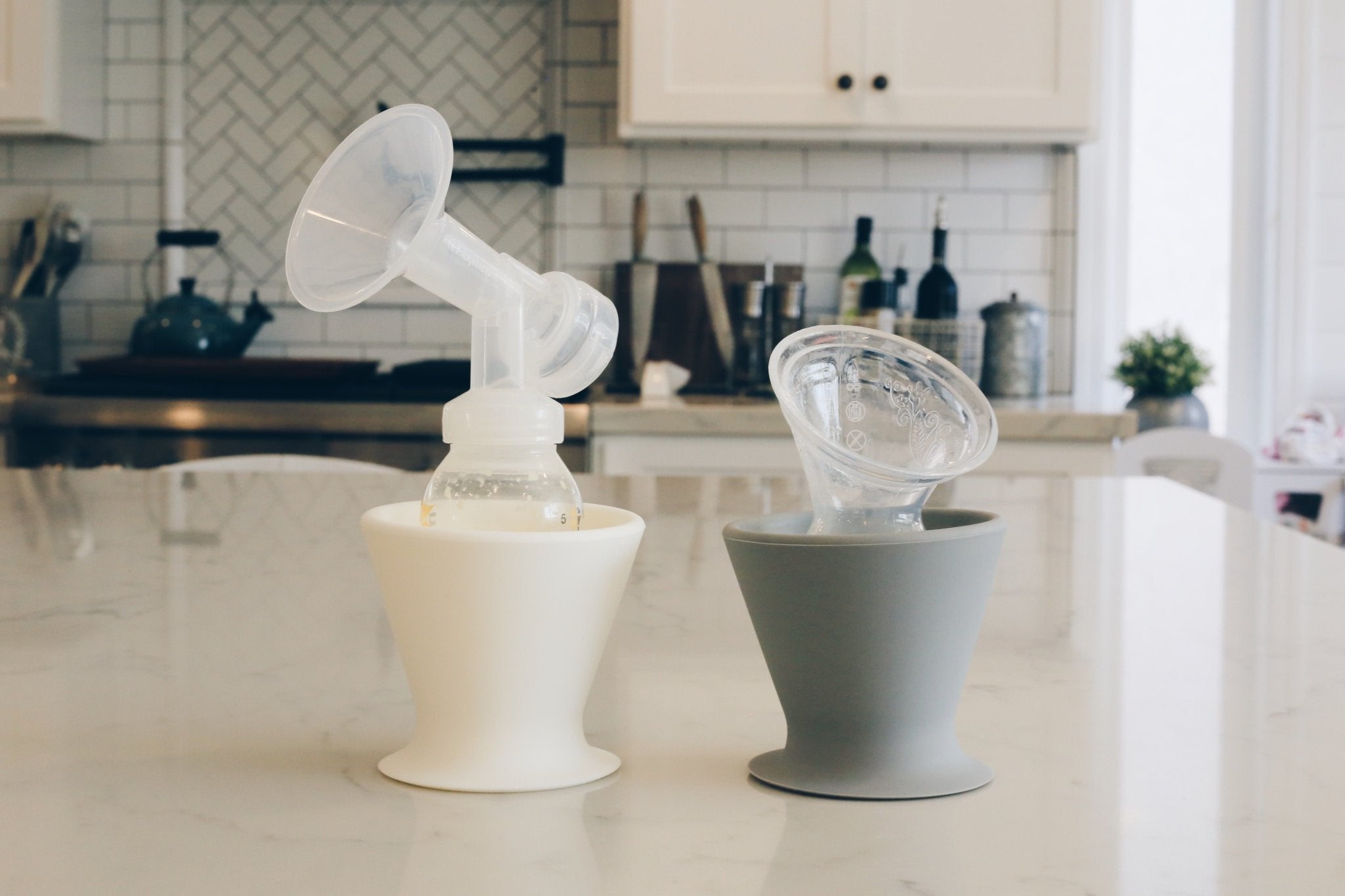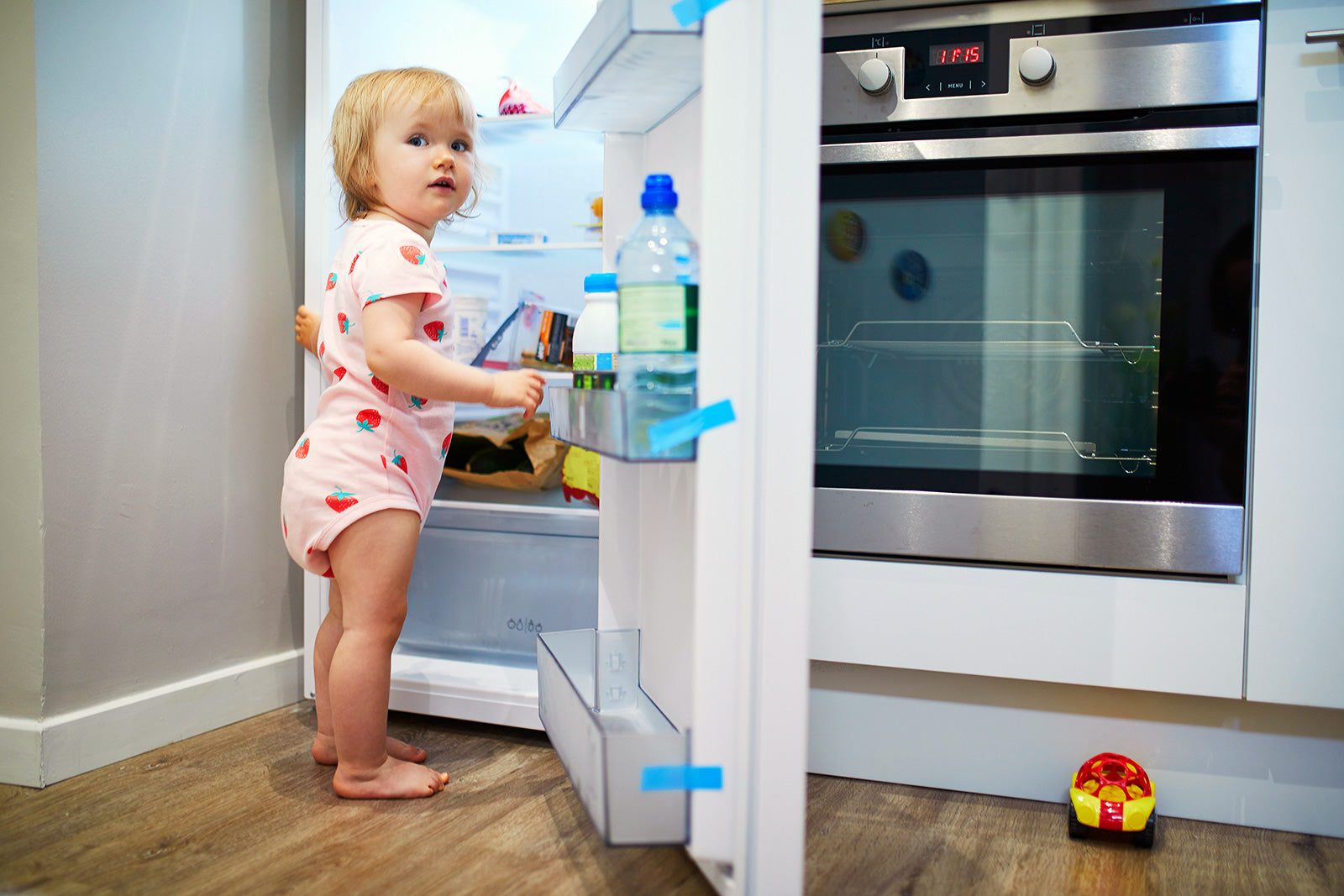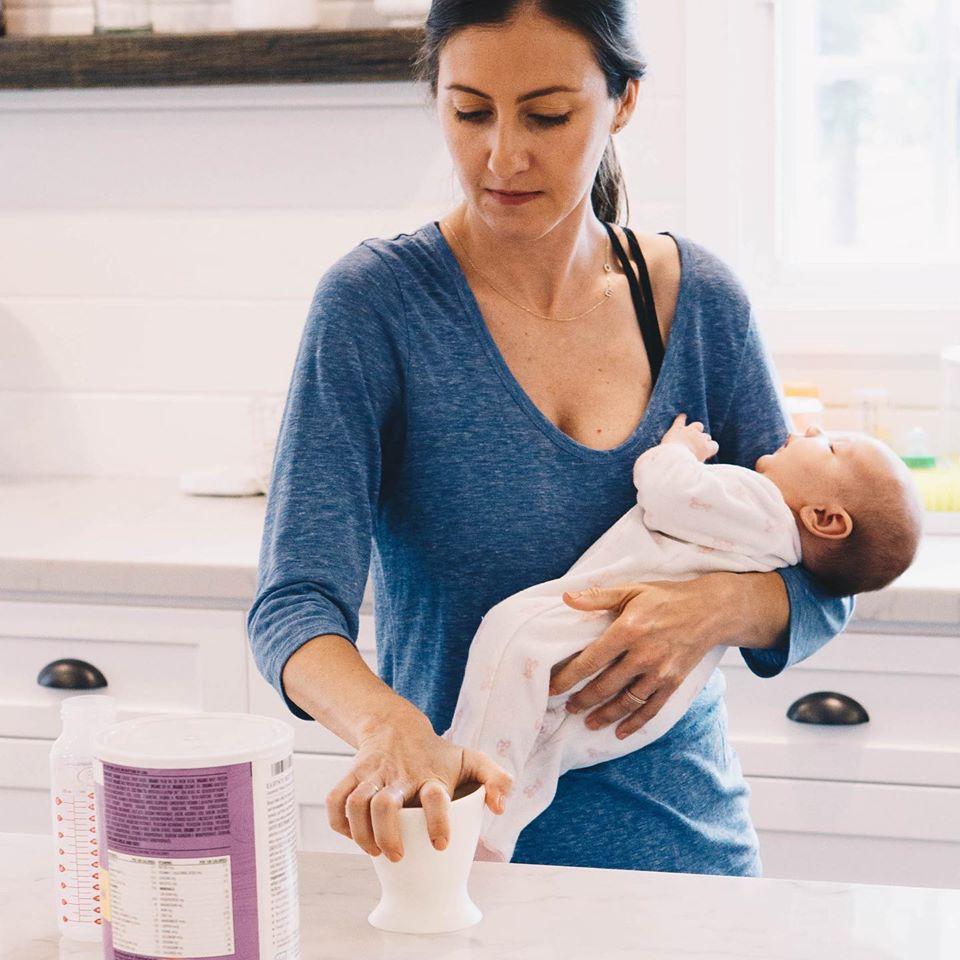How to Wean Your Baby From Breast to Bottle
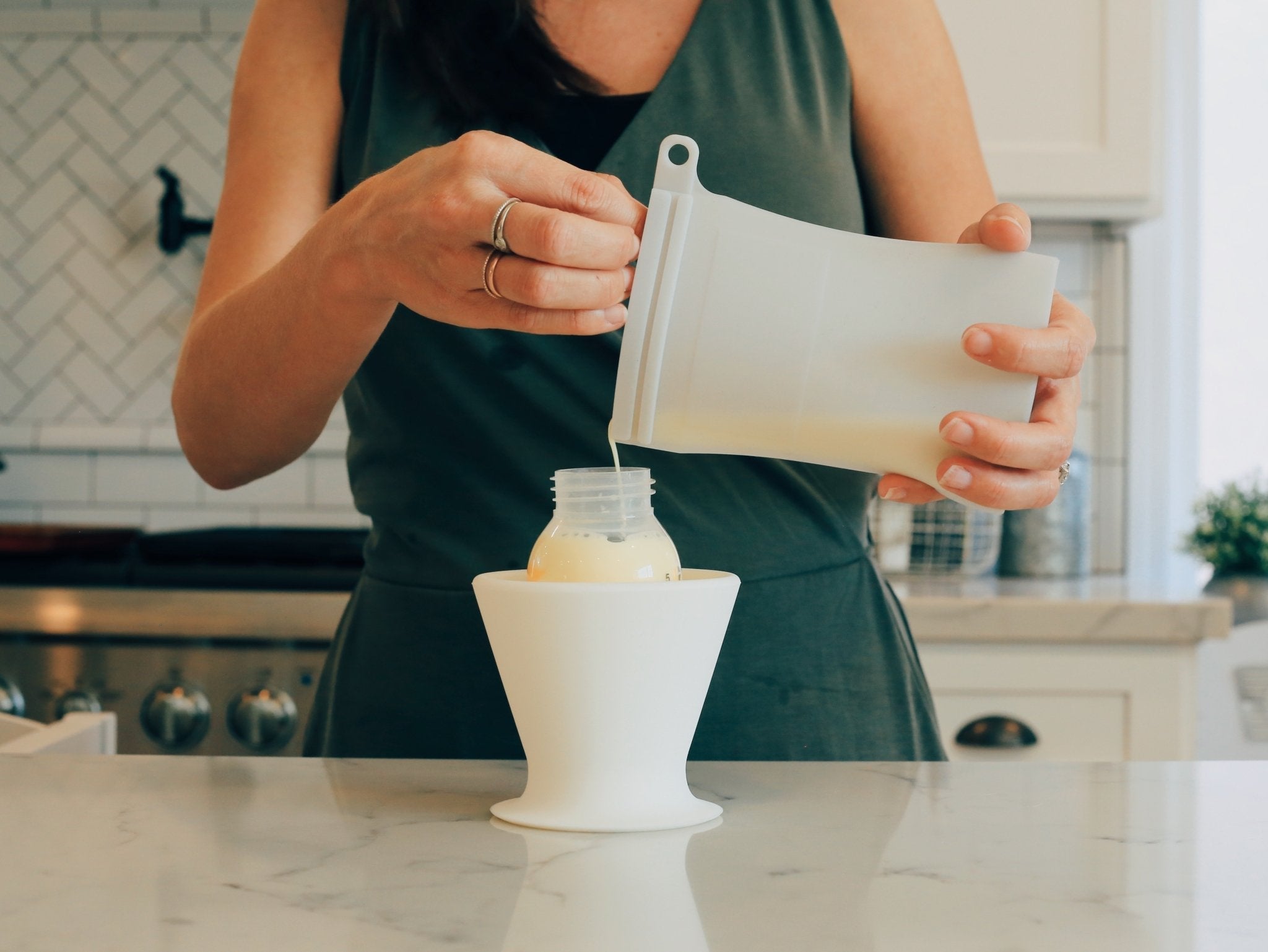
Whether you’ve breastfed for 1 week, 1 month or 1 year, we just want to give you a big ol’ virtual hug for being an amazing mom. Remember that the way you feed your baby isn’t tied to your self-worth or how much you love your little one. Every nursing mom will come to a point where they’ll need to wean their baby from breast to bottle, and only you can know when it's the right time. So if you’ve come to a point where you’re asking yourself, “How do I switch from breast to bottle?” you’ve come to the right place.
Our goal in this article is to give you our best tips to help make the process of weaning from breast to bottle as easy and comfortable as possible.
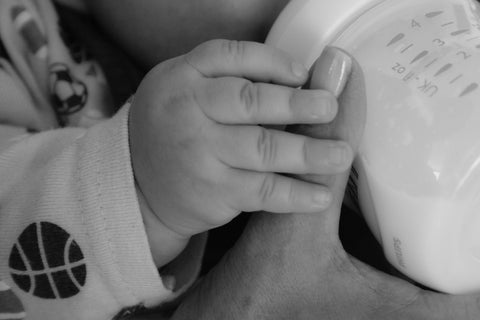
When to Wean From Breast to Bottle
You may be ready to wean your baby off the breast and move them to formula, or you may be thinking ahead about when you’d like to make the transition.
This has a lot of moms asking, “At what age should a baby be weaned from breast milk?”
But there is no perfect answer to this question. Though the AAP recommends that infants be breastfed until they are at least 6 months old, it is not uncommon for mothers to need to wean sooner.
Every mom and baby pair has a unique situation. Some mothers will need to stop breastfeeding for health or emotional reasons, where others will find it near impossible to keep up with nursing and pumping due to their work schedule. No matter the reason, ultimately the decision lies with you. You know what’s best for you and your baby and you should never feel like you have to explain yourself.
Once you've decided you're ready to wean your baby, you'll probably have a lot of questions about the best way to go about it.
Tips for Weaning Baby From Breast to Bottle
Here we'll go over our best tips on how to wean your baby from breastmilk to bottle.
1. Take it Slowly
You may not have a choice to take it slowly, and we get that! (We’ll discuss more on that later.) But if your situation allows you to wean over the course of a couple of weeks, this is highly recommended. Not only will it give your baby time to get on board with this major change, but your body will have time to adjust to the feeding changes.
2. Make Your Body a Priority
As moms ourselves, we know that you put your baby’s needs first. You want to make sure they are healthy and thriving as you switch from breastmilk to formula. But you need to make sure that you are making your health a priority, too. Engorgement, clogged milk ducts, and mastitis are all risks associated with weaning your baby off the breast. This is the number one reason why taking a gradual approach to weaning is a good idea. Little by little your body will produce less milk so that there is less chance of issues arising.
3. Use a Bottle Designed for Breastfed Babies
The options of bottles these days are vast. It can be tough to decide which bottle will be best. Since you have a little one who is already used to breastfeeding, we suggest using a bottle that most closely mimics the breastfeeding experience. Our favorites that give the most nursing-like experience include Comotomo and AVENT Natural.
4. Have Someone Else Bottle Feed Your Baby
Unless your baby has already been getting bottles of pumped breastmilk for a while, then they are going to be even more confused when you, who has always breastfed them, if trying to offer something other than a breast. Letting Daddy or a caregiver give the initial bottles can help your baby take to the bottle more easily.
5. Give Bottles of Breastmilk or a Combo of Breastmilk/Formula First
Even formulas carefully designed to mimic breastmilk will never have the same taste and texture. No doubt your baby will know the difference! If you have the ability to pump bottles for your baby initially, it will help your baby to have the familiarity of breast milk even though they’re transitioning to a bottle. Then you can start to combine breastmilk and formula together to ease the switch even more. If you’re already pumping a little bit to relieve engorgement, just go ahead and put that milk in a bottle!
Weaning a breastfed baby who has always refused a bottle can be challenging. Using the 3 methods just mentioned will help your baby take a bottle more easily.
6. Substitute One Bottle for Every Feed Dropped
You’ll need to make sure that you’re giving your baby a bottle in place of every single feeding that you drop. So if your baby typically nurses 8 times per day, they’ll still need to feed 8 times per day. That may now be 8 bottles with no nursing sessions or could be any combination (i.e. 4 bottles, 4 nursing sessions). This is true even for babies who are eating solid foods do not replace the nutrients found in breastmilk or formula, as the Moms at Wholesome Baby Food remind us.
7. Simplify the Bottle Prep Process
Making such a big change as transitioning from nursing to bottle-feeding can be stressful. Even when you know it’s what is best for you and your baby, it’s definitely a shake up to your typical routine! We are all about making things easier, and one of the easiest ways to do that when it comes to making baby bottles is by using the bökee.
The bökee is a handy bottle prep tool that allows you to make a bottle from start to finish with just one hand. We love it simply because you don’t have to choose between holding your baby and making a bottle. You can do both at the same time. On that note, we recommend you read, “How to Prepare the Perfect Bottle of Baby Formula.” Use BLOG15 to save 15% on a bökee - shop now!
Mother.ly agrees that the bökee is essential for making the breastfeeding to bottle transition.
8. Drop the Least Desirable Feeds First
What we mean by this is, if there is a nursing session of the day where your baby seems more distracted or doesn’t take in a lot of milk, then this would be a great place to start for dropping a feed. On the flip side, dropping the first feed of the day where your baby is starving and guzzling every last drop, don’t start here.9. Alleviate Discomfort With a Pump
Pumping can be a great way to bring relief if you are feeling engorged. Depending on how much milk you produce and which feeding(s) you skip, your heavy breasts may feel full and painful. We recommend either hand-expressing or using a breast pump to drain your breasts just enough to feel comfortable. You don’t want to do a full pumping session; instead, just a few minutes should be enough. This will help you relieve the engorgement while still allowing your body to start to taper off its milk production.
10. Avoid Weaning During a Period of Change
If you can help it, it’s best to hold off on weaning until any major life changes have passed. For instance, you going back to work will already be hard enough on your little one. They’ll likely look forward to nursing again as soon as they see you. Once your baby and family have adjusted to any new circumstances, then you can go ahead and make the switch.
11. Provide Extra Comfort For Your Baby
There are times when babies decide when they’ve had enough with the nursing, but assuming that weaning your baby off of the breast was your idea, they will undoubtedly be a bit confused by the change. They may be extra clingy or fussy. Extra baby snuggles during this time will go a long way!
Further Tips for an Older Infant
Here is some further guidance if you are weaning your baby after the age of 6 months.
Weaning an older baby can be easier than weaning a younger baby, but it also can present different challenges. Here’s what to keep in mind if you are weaning a baby older than 6 months.
Feeding Solids: Babies over 6 months of age (give or take) can start eating solids. Because they are already being introduced to new flavors and textures, this can be a good time to transition to a bottle of formula. Just remember that milk feeds should always happen before feeding solids and that the majority of your baby's nutrition will come from formula or breastmilk until age 1.
Consider Skipping the Bottle and Moving to a Sippy Cup: If you are starting the weaning process with a 9-month-old baby or older, consider skipping the bottle step altogether. Soon enough your baby will need to transition to a sippy cup anyway, so this can streamline the process. Just be sure that your baby is comfortable using a sippy cup before completely making the switch. (The AAP recommends introducing a sippy cup to babies between 6 and 9 months, no matter whether they are breastfed or bottle-fed.)
Expect Some Push Back: Some babies may be completely fine with transitioning to a bottle of formula, whereas others will surely protest. Being a bit older means they have a more established connection with breastfeeding which may make the transition a bit more difficult. Just keep this in mind and know that within a couple of weeks your baby will be drinking out of a bottle just fine!
Partial Weaning, Gradual Weaning or Cold Turkey?
Weaning isn’t one size fits all. Here are the different ways you might wean your baby to a bottle:
Partial Weaning
It’s important to note that weaning from breast to bottle doesn’t necessarily mean it has to be one or the other. Many mothers will choose to partially wean in which they continue to nurse for some feeds of the day and give formula bottles for the others. You’ll still want to attempt to use a gradual method even when you still plan to continue to partially nurse.
Gradual Weaning
As noted above, this is the best way to go about weaning your baby. We suggest taking away only 1 nursing session at a time, and then waiting at least a couple of days before taking away another. This is the best way to give your breasts time to adjust to making a bit less milk at a time.
So, if you go this route, you might be curious to know how long it will take to wean your baby off of breastfeeding.
How long the gradual weaning process takes will depend on the age of your baby and how many times she nurses each day. If you follow our recommended advice of only dropping one feed every couple of days, then plan for your baby to be fully weaned in about 2-3 weeks. However, if you want to stretch it out longer, then do it! There is no need to rush it and you should continue to nurse for as long as you want to.
Cold Turkey Weaning (When Necessary)
Because of how hard it can be on a mother’s body, just dropping nursing altogether immediately isn’t recommended. Your baby might even be ok with it, but you're risking painful engorgement or a breast infection by choosing this route. With that said, there are certain cases where you just may not have a choice to wean your baby from breast to bottle cold turkey.
Ice packs, hand-expressing, and taking anti-inflammatories during this time will help you. Healthline has some further tips on how to more comfortably get through abrupt weaning.
No matter how and when you decided to wean, we know you'll do it with the utmost love and care!



